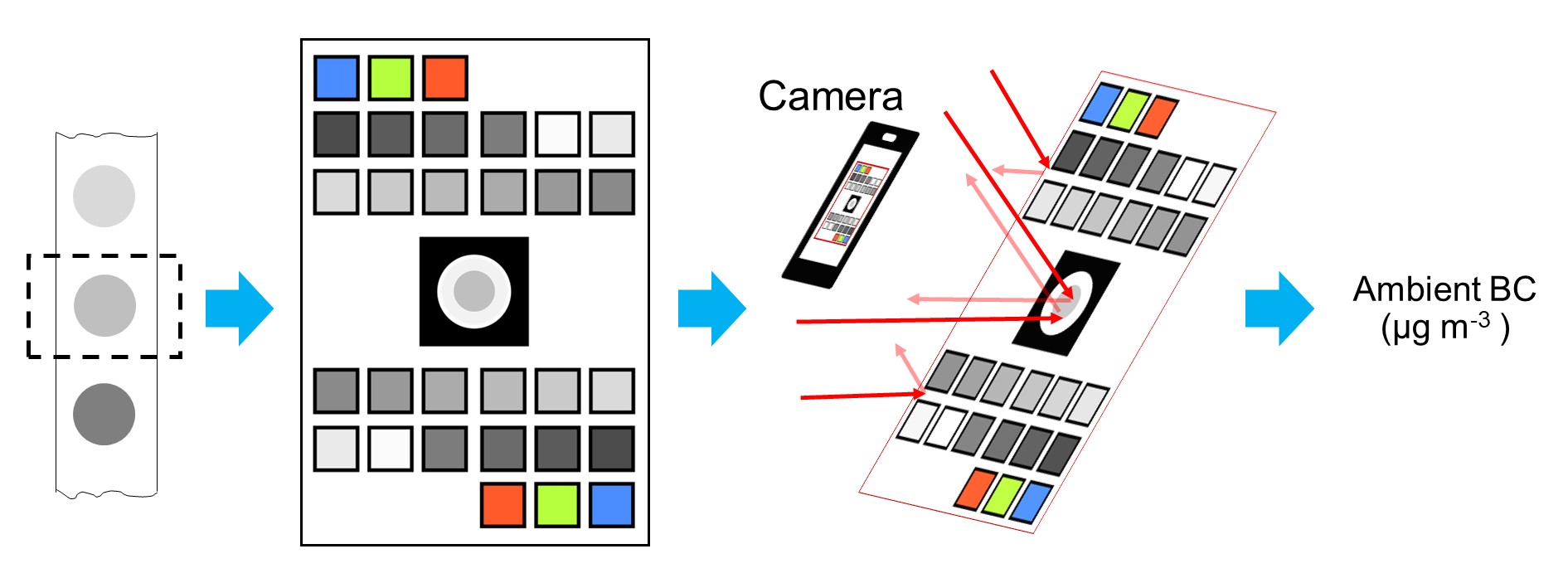
Scott Institute Seed Grant Leads to Air Quality Innovation
By Jai Shekhar, Wilton E. Scott Institute for Energy Innovation Intern
Media InquiriesAir quality is a significant global challenge that affects people worldwide. Globally, air pollution contributed to just over 1 in 10 deaths in the latest year. Fortunately, the field of air quality research has seen progress in recent decades, thanks to innovative technology and the collaborative efforts of experts worldwide.
One such expert is Scott Institute faculty affiliate Albert Presto, a research professor in the Mechanical Engineering Department whose research is supported by the Scott Institute seed funding program. The seed funding led to an air quality innovation in which low-cost air quality monitoring can be achieved using cell phone cameras. The project was recently published in the journal Environmental Science: Atmospheres.
Presto's research project focuses on the intersection of two areas of interest for his research group at CMU: low-cost air pollutant sensing and work in the Global South, particularly in Africa. While his research group has done extensive work on low-cost air pollutant sensing in the United States, they aimed to expand their research to other regions worldwide where air quality information is scarce. To achieve this, they leveraged consistent air quality data that was publicly available from US embassies in the Global South, albeit limited to a small number of pollutants, measured using filter tape – a common technique of measuring air pollution by blowing a known quantity of air onto a “tape”-like surface over a known period of time and then calculating the concentration of black carbon, an air-based pollutant, on the tape. Presto and his team seized this opportunity and developed a low-cost method to analyze filter tape images using cell phone cameras. This enabled them to monitor a wider range of pollutants and create spatially rich maps of air quality.
“Collaboration played a significant role in the success of this project,” said Presto, who worked closely with Professor SP Kompalli and Eniola Ajiboye (Former Masters candidate) from CMU Africa along with Abhishek Anand (Ph.D. candidate) at CMU, Pittsburgh. Together, they developed a low-cost method for air quality monitoring that could be used anywhere in the world.

The relevance of Presto's paper is global, particularly in the context of energy transitions. Air quality and climate are closely linked, with many of the biggest anthropogenic emissions of air pollutants coming from combustion, which is also a major source of greenhouse gasses. This makes energy transitions a crucial area of study, particularly in developing countries where people are trying to industrialize and improve their standard of living.
The Scott Institute played a significant role in supporting Presto's research. The institute provides seed grants for research projects, which have been available for more than ten years. Presto was awarded funding in 2021 in the 9th round of seed grants. “The proposal process is pretty easy!” said Presto while talking about the application, which involves submitting a two-page proposal and providing faculty members with enough advance notice to prepare their applications. “The timeline is convenient and aligns well with graduate student recruitment,” he said.
Presto has applied for follow-on funding for his research, and the next steps involve obtaining tapes from embassies and exploring additional analyses. “There are also additional analyses we can do with the filter tapes”, says Presto. These involve using filters to understand the full composition of the particulate matter and its sources. Currently, they are supported by grants from the Dowd Fellowship and the National Science Foundation.
Presto's research serves as an example of the importance of collaborative efforts and innovative technology in addressing global issues such as air quality. Researchers can leverage the support of institutions such as the Scott Institute to continue developing low-cost methods for air quality monitoring and contributing to the global conversation on energy transitions.